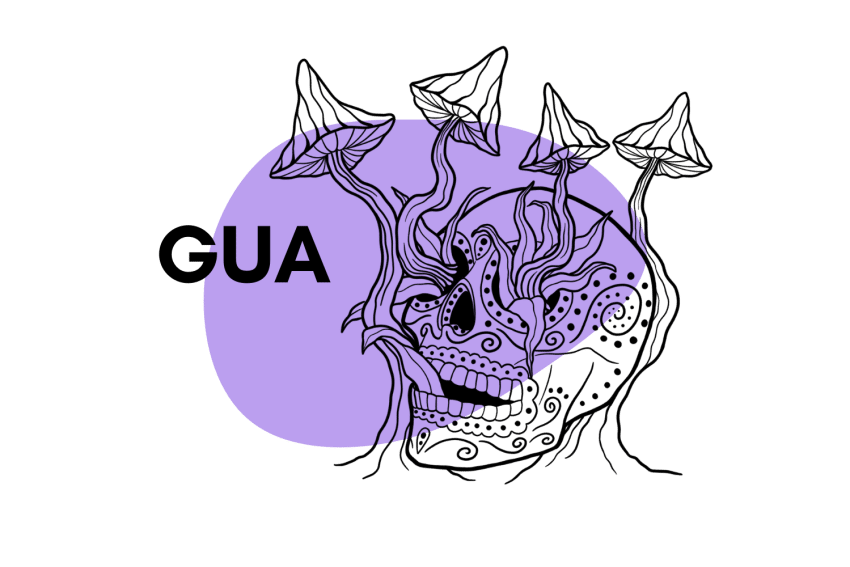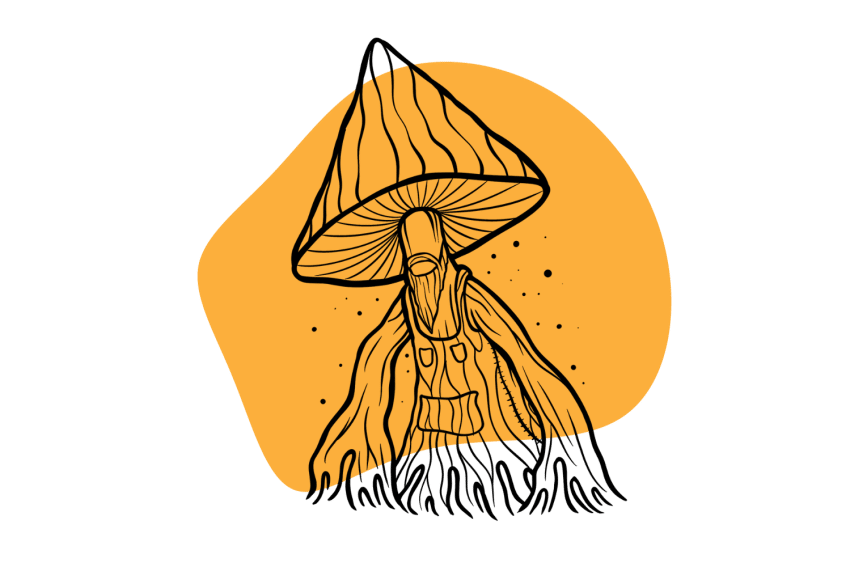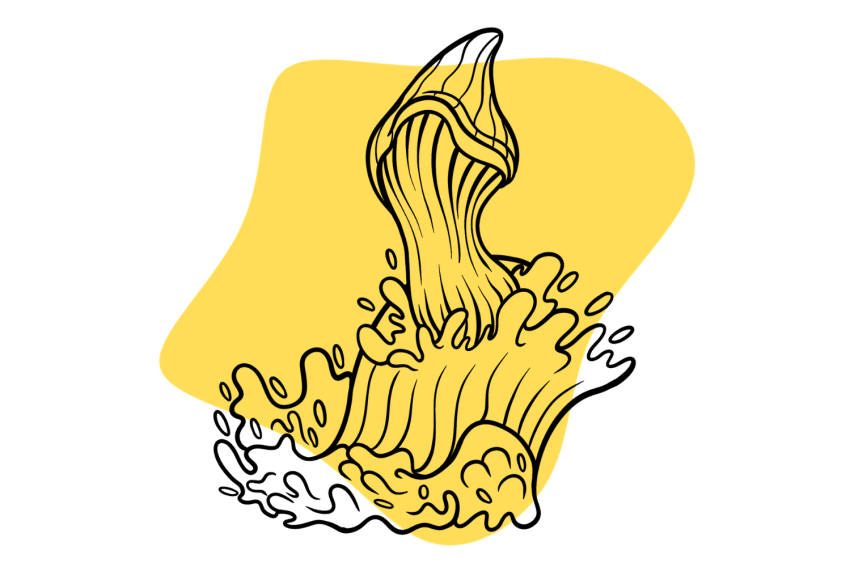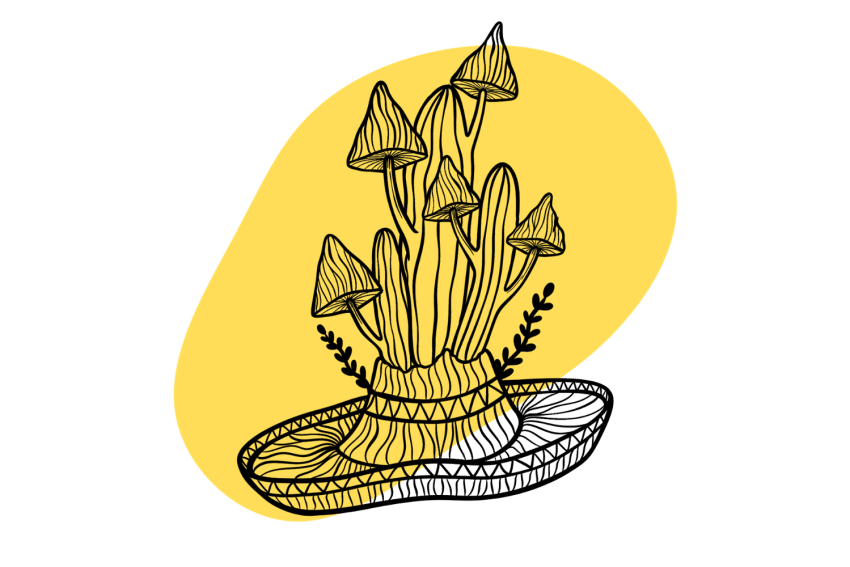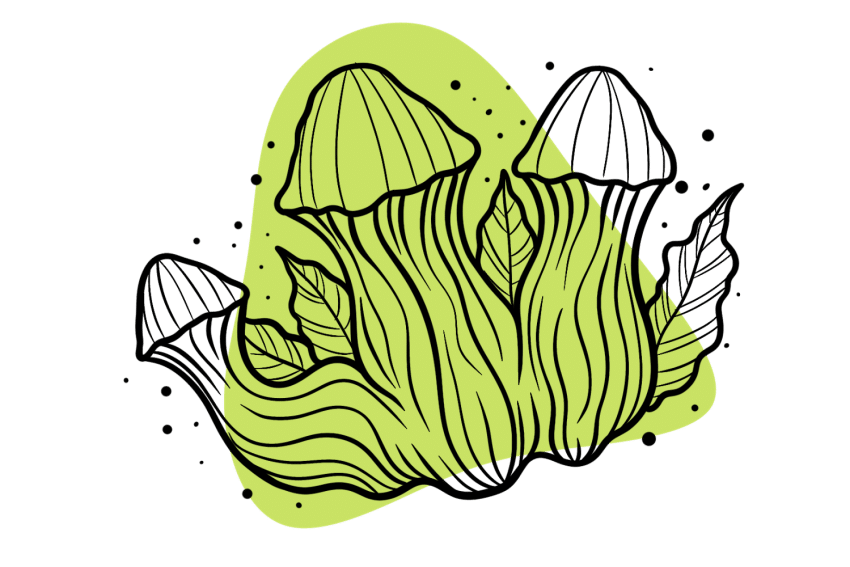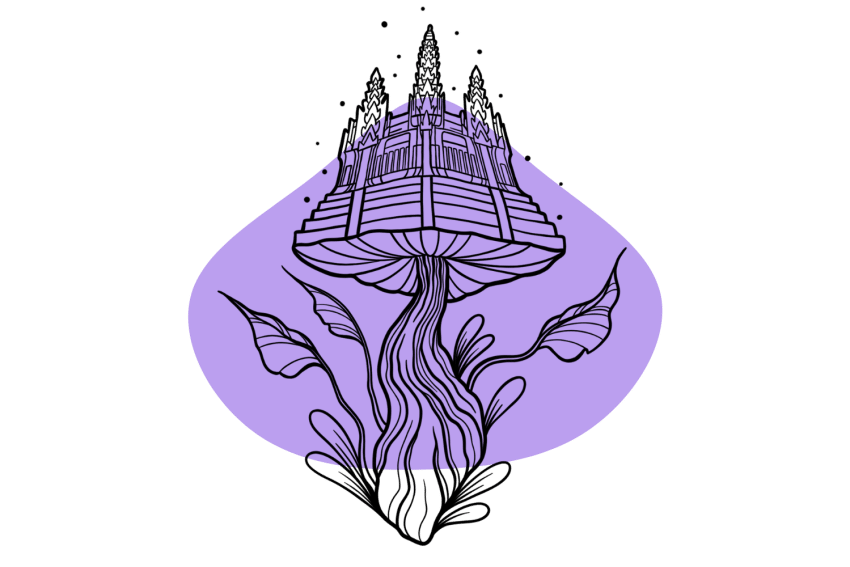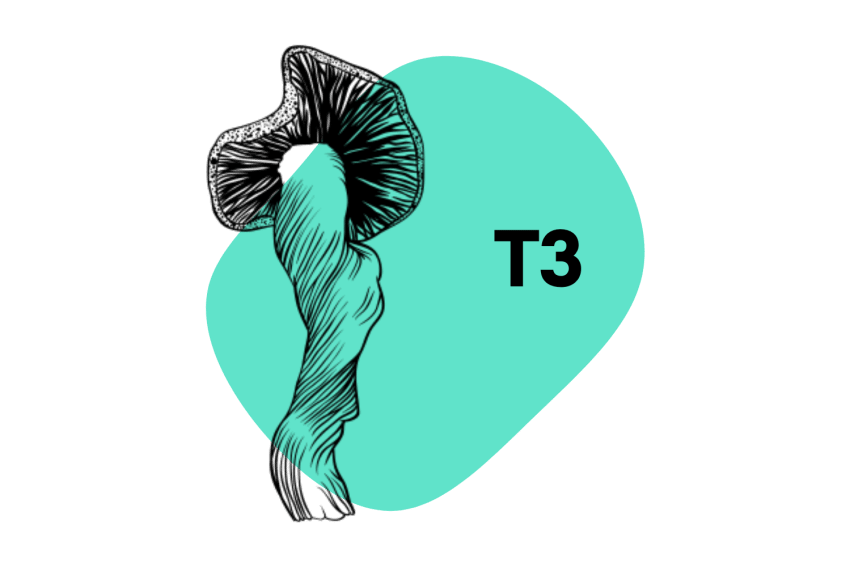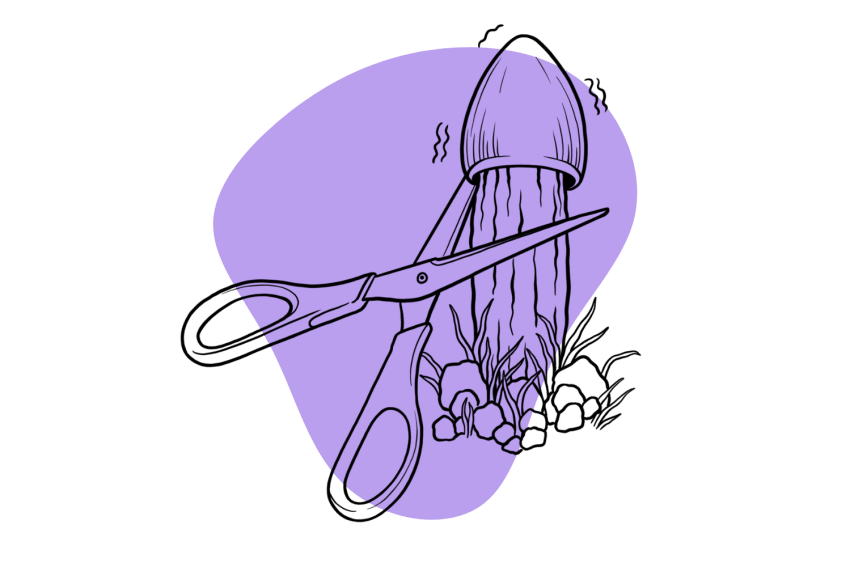The Xico Strain: An Intriguing Mexican Psilocybe cubensis Variant
This Mexican strain is rather unusual — its backstory is unclear, and its genetics can be problematic. Although this curious shroom may not be for everyone, it does have some desirable traits…
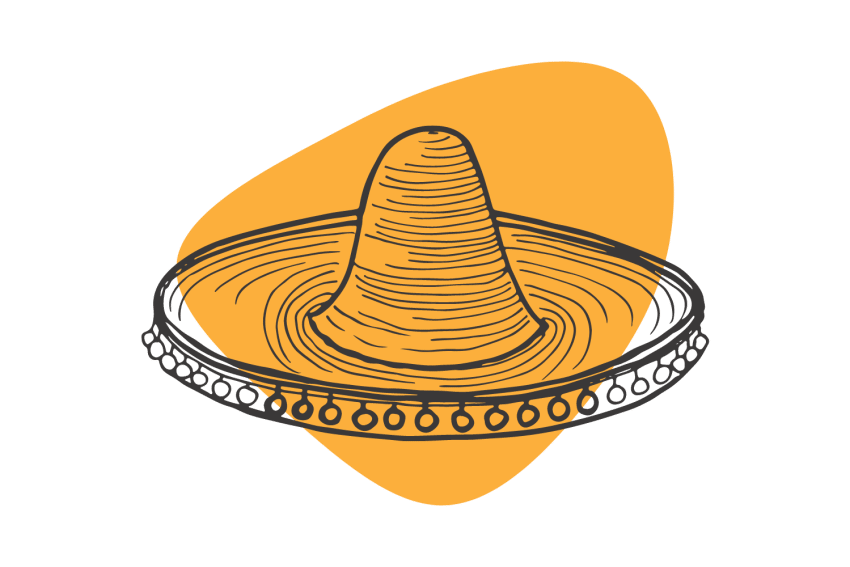
The Xico strain was discovered growing wild near the city of Xico in Veracruz, Mexico. There’s a lot of controversy surrounding the origins of this strain. Some say it was discovered in 2007; others say it was collected in 2018. One thing does seem certain, and that’s its place of origin.
This strain is considered relatively weak for a Psilocybe cubensis strain with an estimated psilocybin level of 0.50% or less. Regardless, the effects of the mushroom are introspective, relatively visual, and “mellow.”
Although this strain is relatively easy to cultivate, some of the genetics available for the Xico strain appears to be quite unstable — something common with less established strains on the market. This can be noticed as aborts, inconsistent results from flush to flush, and irregular mushroom shapes and sizes.
Successful results are possible with Xico — just as many people report good results as those that report unusual fruiting characteristics.
Related: 100+ Magic Mushroom Strains Explained
Xico shrooms have golden-colored caps that are saucer-like in shape. The stems are relatively dense and lightly colored. These mushrooms are medium-sized when cultivated in an artificial environment, but some relatively large specimens have been collected from the wild.
In this article, we’ll be looking at:
- The history of the Xico strain
- Xico strain potency
- Other Mexican Relatives of the Xico strain
- Where to purchase Xico spore samples
- How to cultivate Xico shrooms
- A few other mild-potency Psilocybe cubensis strains
I’ll also be answering some frequently asked questions about the Psilocybe cubensis species, its many strains, and its history.
Xico Strain Specs
| Potency | Mild |
| Cultivation | Beginner |
| Species | Psilocybe cubensis |
| Substrate Recommendation | BRF, Rye Grain, Pasteurized Manure |
| Sold By | Spores 101 (🇺🇸/🇨🇦), Miracle Farms (🇺🇸/🇨🇦), Sporeslab (🇨🇦), The Magic Mushrooms Shop (🇪🇺) |
History of the Xico Strain
The history of the Xico strain is blurry at best. It’s unknown exactly how the strain came to be on the market, but there’s evidence that it was first collected back in 2007.
A user of the mushroom forum Shroomery named “Farbo” posted photos of a Psilocybe cubensis mushroom he discovered in Xico, Veracruz, back in 2007. He was looking for someone to help him collect spores from the strain. This may have been the first encounter with “the Xico strain.”
Supposedly, the famous American mycologist Alan Rockefeller later collected a sample of the strain and made spore prints. The spores were then isolated on agar and cultivated — the resulting “clean” spores were collected and distributed.
To contradict this story entirely, other reports suggest that the strain was collected back in 2018 from a patch of cow dung in a field just outside the city of Xico.
Regardless of the confusion surrounding its back story, the Xico strain is now available from a couple of different spore vendors based in Canada — one of which ships internationally.
Xico Strain Potency & Psilocybin Content
We’ve rated the Xico strain as mild — producing less than 0.50% psilocybin.
Although on the weaker side, the strain is incredibly introspective. Mild visual distortions, euphoria, and bodily sensations with feelings of “waves of energy” can be expected from doses of 3 grams or higher. The trip produced by these shrooms is calm and easygoing — perfect for the beginner.
There’s very little data on the exact tryptamine levels produced by the Xico strain, and it’s yet to be entered into the Oakland Hyphae Psilocybin Cup. Hopefully, as the strain becomes more established, we’ll see an entry into a future cup.
Where to Buy Xico Mushroom Spores
Currently, the only reliable spore vendors that stock the Xico strain are based in Canada. However, one of these vendors does ship internationally to the United States, the United Kingdom, and most of Europe.
Here are some recommendations to check out — keep in mind most don’t actually carry the Xico strain, but most carry closely-related strains instead:
- If you live in the United States — MYYCO, Spores 101, Miracle Farms
- If you live in Canada — Spores 101, Sporeslab, Planet Spores
- If you live in Europe — The Magic Mushrooms Shop (🇪🇺), Shiny Spores (🇬🇧)
→ View all spore vendors & grow kit suppliers
The Xico Strain Genetic Relatives
The Xico strain shares several similarities with some other Psilocybe cubensis strains collected from Mexico.
Here are some of the Xico strain’s Mexican cousins:
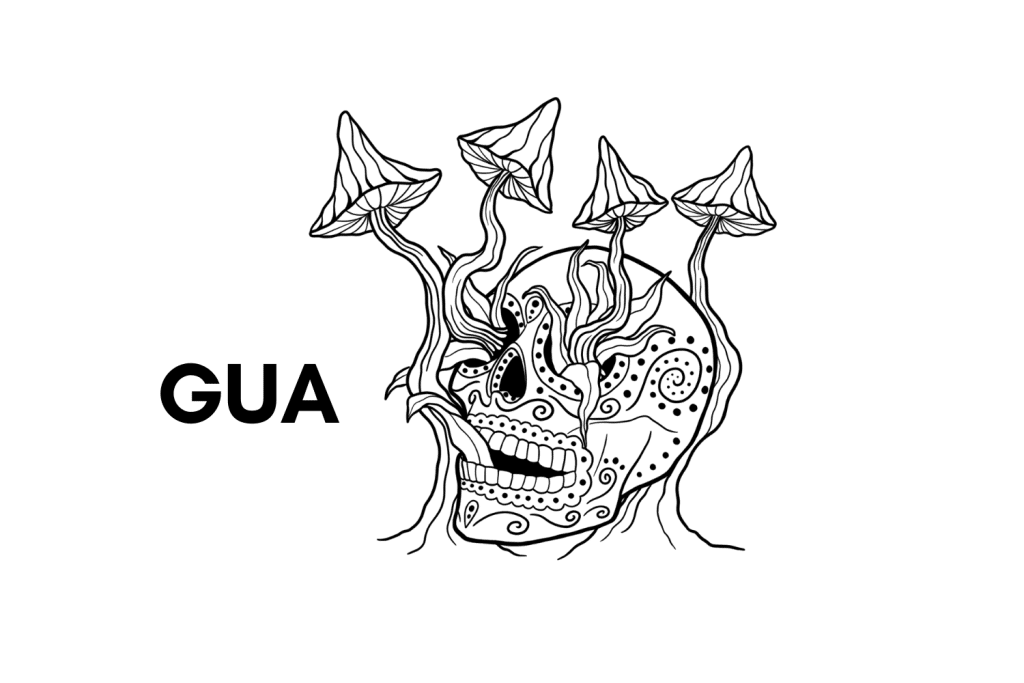
1. The Guadalajara Strain
The Guadalajara strain looks remarkably similar to the Xico strain. These medium-sized mushrooms have golden caps and dense light stems — to the untrained eye, they could easily be confused with the Xico variant.
Although similar, the Guadalajara strain is much more potent — producing psychedelic tryptamines at levels of 0.90% to 1.80%.
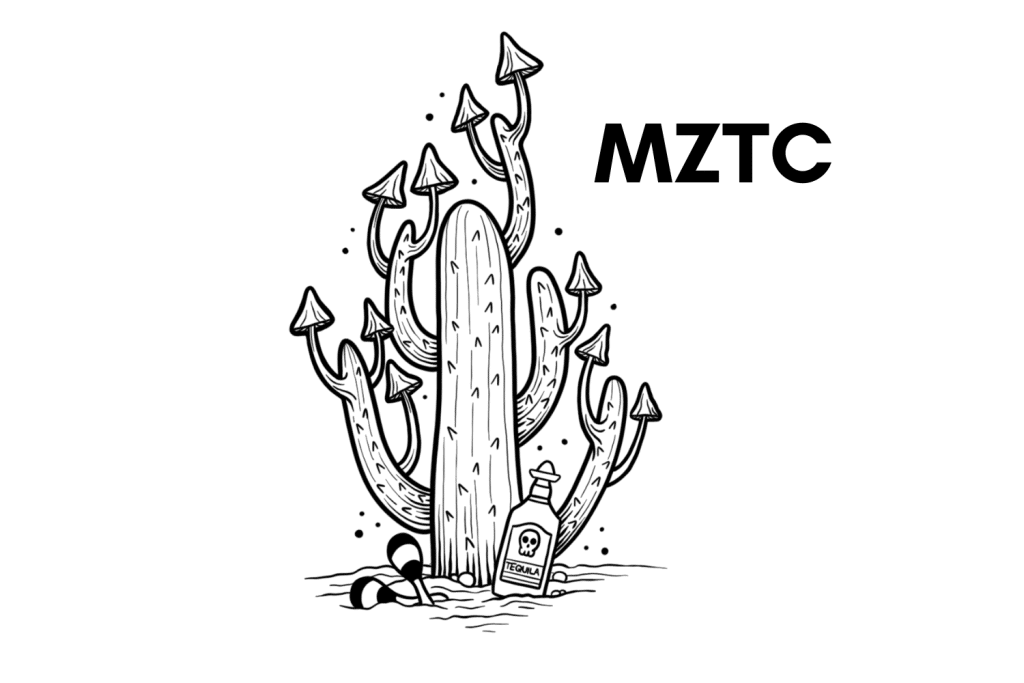
2. The Mazatapec Strain
The Mazatapec strain was one of the first P.cubensis variants to be brought back to the West. It shares a few visual and chemical similarities with the Xico strain.
The Mazatapec strain produces slightly higher psilocybin levels (around 0.60%) and bears smaller fruits.
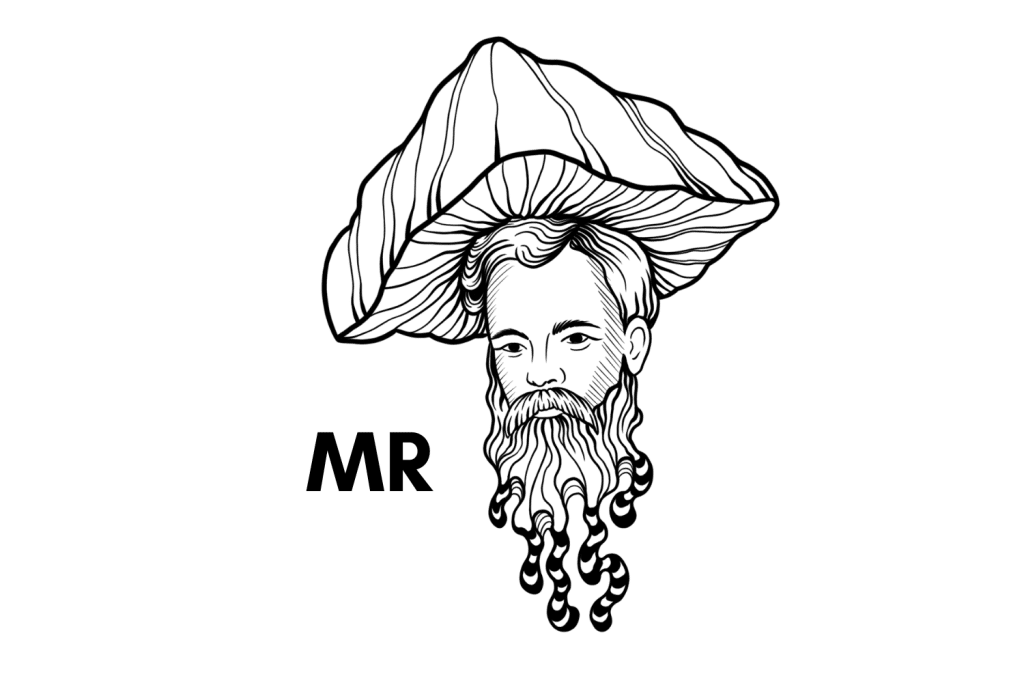
3. The Matias Romero Strain
The Matias Romero strain is remarkably similar to the Xico P.cubensis variant. Both strains look very similar and produce around the same amount of psilocybin.
This strain is also quite unstable — with aborts and inconsistent results from flush to flush commonplace.
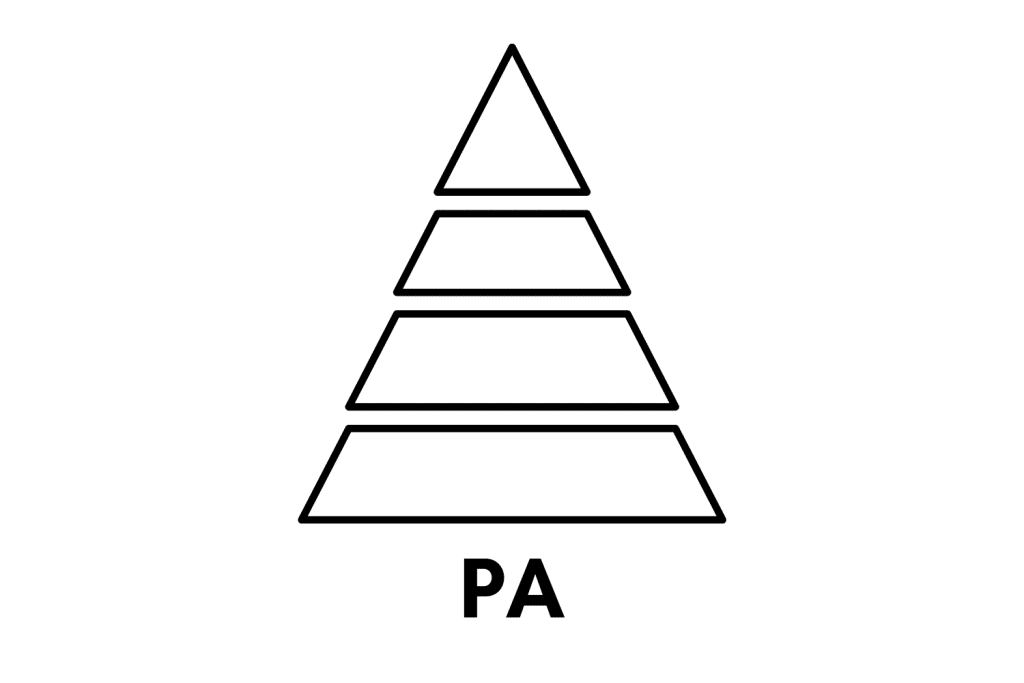
4. The Palenque Mexico Strain
The Palenque Mexico strain is identical to the Xico strain in almost every way. It shares the same growth characteristics, inconsistencies, and they look more or less identical. However, the Palenque Mexico strain is more potent — producing psilocybin levels of 0.80% or more.
How to Grow Xico Mushrooms
Xico mushrooms — and most other Psilocybe cubensis strains, for that matter — can be grown using a simple cultivation method known as the “Psilocybe fanaticus technique” (PF-Tek for short).
PF-Tek requires some basic knowledge of mushroom cultivation and a few pieces of equipment that can be purchased from local hardware stores, aquatics stores, plant nurseries, or online mycological suppliers.
Here’s a rundown on how to grow Xico mushrooms using PF-Tek:
1. Prepare the Substrate
Xico does well on most substrates (BRF, rye grain, and pasteurized manure). The substrate must be prepared through sterilization — this can be achieved by filling mason jars with substrate and placing them in a pressure cooker for 30 minutes with the lids loosely sealed.
2. Inoculation
Once the substrate-filled jars have cooled, they must be inoculated with a spore-filled syringe and sealed. This must be done in a sterile environment to reduce the risk of contamination; otherwise, foreign bacteria can outcompete the mycelial growth from the spores.
3. Incubation
The inoculated jars are then placed in a simple incubation setup at 20–28 ºC (68–82 ºF) for one to two weeks until the mycelium has completely colonized the substrate. A simple incubator can be made from a couple of containers, a bit of water, and an aquarium heater.
4. Fruiting
When the mycelium has colonized the substrate completely, they’re ready for fruiting. The “mycelium cakes” inside the jars are placed carefully inside a fruiting chamber on top of a layer of perlite. The chamber should be kept between 10–20 ºC (50–68 ºF) and sprayed with a fine mist every couple of days.
After a while, mushrooms will start to develop. It’s important not to touch the small “pinheads” that appear relatively soon after transfer to the fruiting chamber — this can cause them to abort. The mushrooms can be harvested as they mature, but before they sporulate.
5. Drying and Storing
All of the mushrooms from the colonies won’t spring up at once. Instead, they’ll mature at different rates over several flushes. Fresh mushrooms will keep in the refrigerator in a paper bag for a week or two. Dried mushrooms last far longer.
The mushrooms you’ve harvested can be dried and stored long-term in jars. Drying is as easy as leaving the mushrooms on a piece of paper for a few days in a dark, warm, well-ventilated area. Alternatively, a dehydrator can be used.
This was a very brief rundown of Psilocybe cubensis cultivation. If you want to learn more about the cultivation process, have a read through this step-by-step guide: How To Grow Magic Mushrooms.
Other Mild Psilocybe cubensis Strains
Sometimes potency isn’t everything. Weaker shrooms are great options for beginners, microdosers, and those that want to have more control over their experience. Xico is a mild-potency shroom, but it’s not the only option if you’re looking for something a little less intense.
Here are a few weaker strains of Psilocybe cubensis to take a look at:
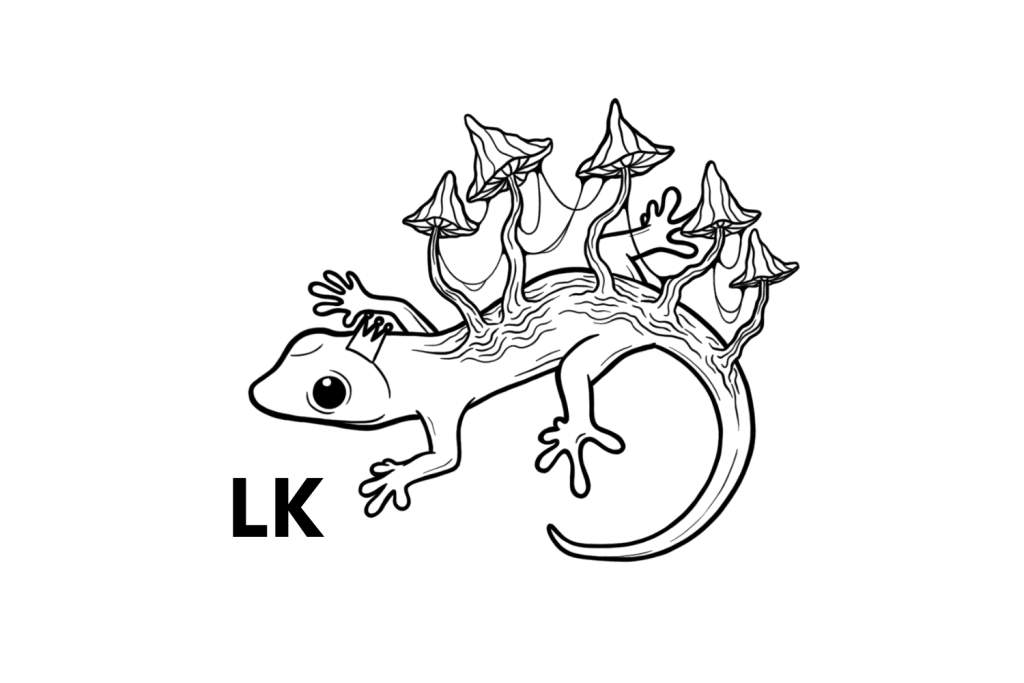
1. Lizard King
The Lizard King strain is named after the mycologist that discovered it. The strain was first collected somewhere in Mexico by the anonymous mycologist that goes by the online handle “Lizard King.” It was noted to be found growing on decomposing wood which is unusual for a Psilocybe cubensis mushroom.
This mushroom isn’t famed for its potency — producing somewhere in the region of 0.30% to 0.50% total psychedelic tryptamines (psilocybin and psilocin).
The experience induced by Lizard King shrooms is “clean and calm” with very little in the way of a body high or intense visuals. This is a great choice for microdosers or those that want to consume threshold doses without inducing a full-on psilocybin trip.
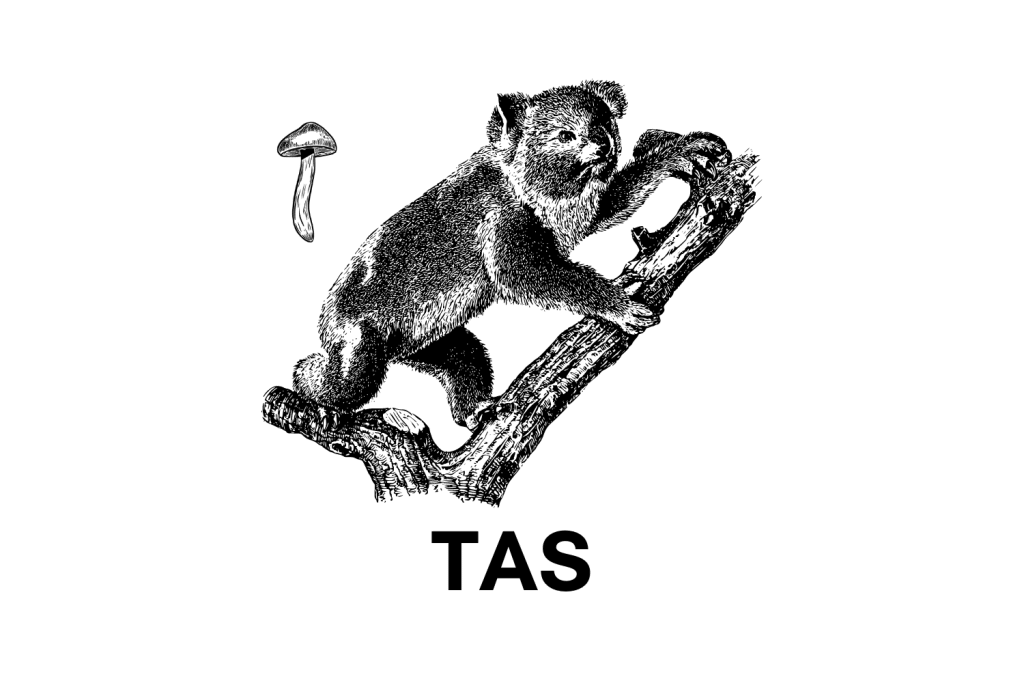
2. Tasmanian Strain
The Tasmanian strain was discovered growing on the island of Tasmania — a large forested island off the southern tip of Australia.
Tasmanian shrooms are medium to large and produce psilocybin levels around 0.40% making it a suitable strain for beginners, microdosers, or people that want to consume light doses.
This strain is a prolific sporulator — making it ideal for mycologists that want to collect spores for microscopy or reproduction. It’s contamination-resistant, colonizes rapidly, and fruits quickly.
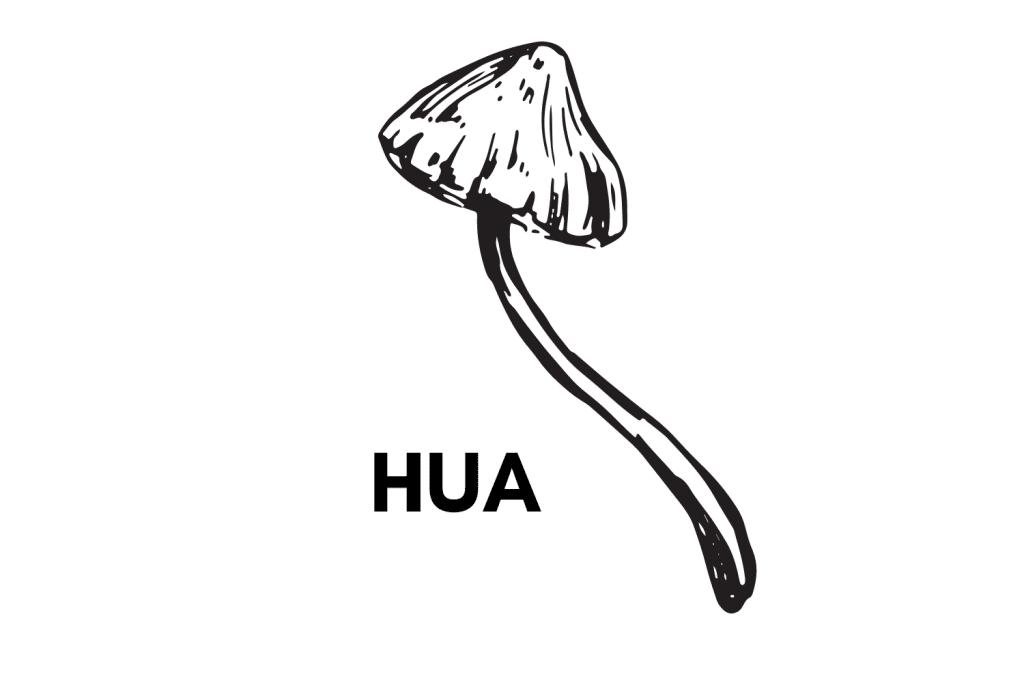
3. Huautla (Oaxaca) Strain
The Huautla strain was collected from the famous mountain town of Huautla de Jiménez in Oaxaca, Southern Mexico. This town is historic in the psychedelic space because it’s the hometown of the legendary curandera Maria Sabina — the woman that introduced Robert Gordan Wasson to psychedelic mushrooms.
This strain is relatively new to the market, but it’s gaining in popularity quickly. It’s incredibly easy to grow and produces relatively low psilocybin levels (around 0.40%), making it the perfect choice for beginner cultivators and psychonauts alike.
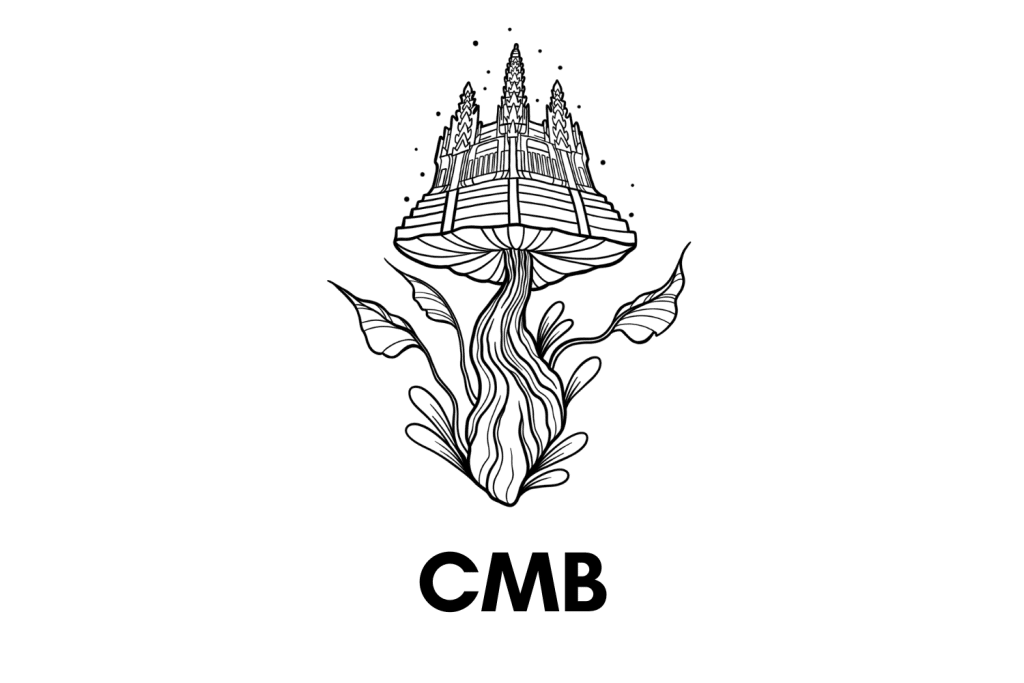
4. Cambodian Strain
The Cambodian strain was originally collected by the famous mycologist John “Mushroom” Allen during his travels through Southeast Asia during the 1990s. He collected the first sample from a pasture near the temple of Angkor Wat in Cambodia.
Like most Southeast Asian strains, Cambodian mushrooms are highly resistant to contamination and are capable of thriving in an unoptimized environment. This strain is considered weak — producing psilocybin levels of around 0.45%.
The Cambodian strain is an excellent choice for both the inexperienced cultivator and the beginner to magic mushroom consumption.
Frequently Asked Questions
1. What’s The Easiest Psilocybe cubensis Strain to Grow?
Most strains of Psilocybe cubensis are relatively easy to cultivate. However, some strains stand out more than others in terms of ease of growth.
The easiest strain for beginner growers is considered to be Golden Teacher, but this isn’t the only strain that’s suitable for the newbie mushroom cultivator.
So, what makes an “easy-to-grow” strain?
An easy-to-grow strain should be highly-resistant to contamination, have aggressive colonization habits, be able to withstand unoptimized environments, and fruit quickly. Several strains of P.cubensis fit these requirements.
Here are some of the easiest Psilocybe cubensis strains to grow other than Golden Teacher:
2. What’s The Strongest Psilocybe cubensis Strain
The Strongest Psilocybe cubensis strain has long been considered Penis Envy. The classic saying goes, “a cube is a cube except for Penis Envy” — this is because Penis Envy is worlds apart from most other P.cubensis shrooms.
Penis Envy shrooms are capable of producing four times as much psilocybin and psilocin as the typical P.cubensis strain. It’s not uncommon to see psilocybin levels of above 1.60% and psilocin levels of over 1.20% when Penis Envy samples are tested.
The strain that holds the podium for “strongest cube” isn’t strictly a Penis Envy mushroom. However, it does have Penis Envy genetics.
The Tidal Wave strain won the Spring 2021 Oakland Hyphae Psilocybin Cup with a whopping 2.26% psilocybin level and 1.56% psilocin level. Tidalwave is a hybrid of Penis Envy and another potent strain called B+.
Although the Tidal Wave sample entered into the Psilocybin Cup produced unbelievably high psychedelic tryptamine levels, the average grower will often produce more potent mushrooms with the use of Penis Envy spores.
3. When Was Psilocybe cubensis First Discovered?
The first official recording of Psilocybe cubensis was in 1906. The first sample was discovered by American mycologist Franklin Sumner Earle in Cuba [1]. It was originally classified as Stropharia cubensis.
The species was first found in the United States in 1941 by William Alphonso. He discovered the sample growing near Gainesville, Florida [2]. This time, the species was labeled as Stropharia cyanescens.
It wasn’t until 1949 when the famous German mycologist Rolf Singer reclassified the species and moved it into the genus Psilocybe — this is when its true binomial name, “Psilocybe cubensis,” was born [3]. We’ve used this name ever since to describe the many variants of the species.
Related: List of Psilocybin Mushroom Species
Although the first P.cubensis sample was discovered by a Westoner as early as 1906, its psychedelic properties weren’t revealed until the 1950s. Albert Hofmann (the man that first synthesized LSD) and R. Gordon Wasson (the man that introduced “magic mushrooms” to the West) identified the species as a source of the psychoactive compound psilocybin in 1958 [4].
References:
- Earle, Franklin Summer (1906). “Algunos hongos cubanos”. Información Anual Estación Central Agronomica Cuba (in Spanish). 1: 225–242 [240–241].
- Murrill, W. A. (1941). More Florida novelties. Mycologia, 33(4), 434-448.
- Guzmán, G. (2019). The hallucinogenic mushrooms: diversity, traditions, use, and abuse with special reference to the genus Psilocybe. In Fungi from different environments (pp. 256-277). CRC Press.
- Hofmann, A., Frey, A., Ott, H., Petrzilka, T., & Troxler, F. (1958). Konstitutionsaufklärung und synthese von psilocybin. Experientia, 14(11), 397-399.

